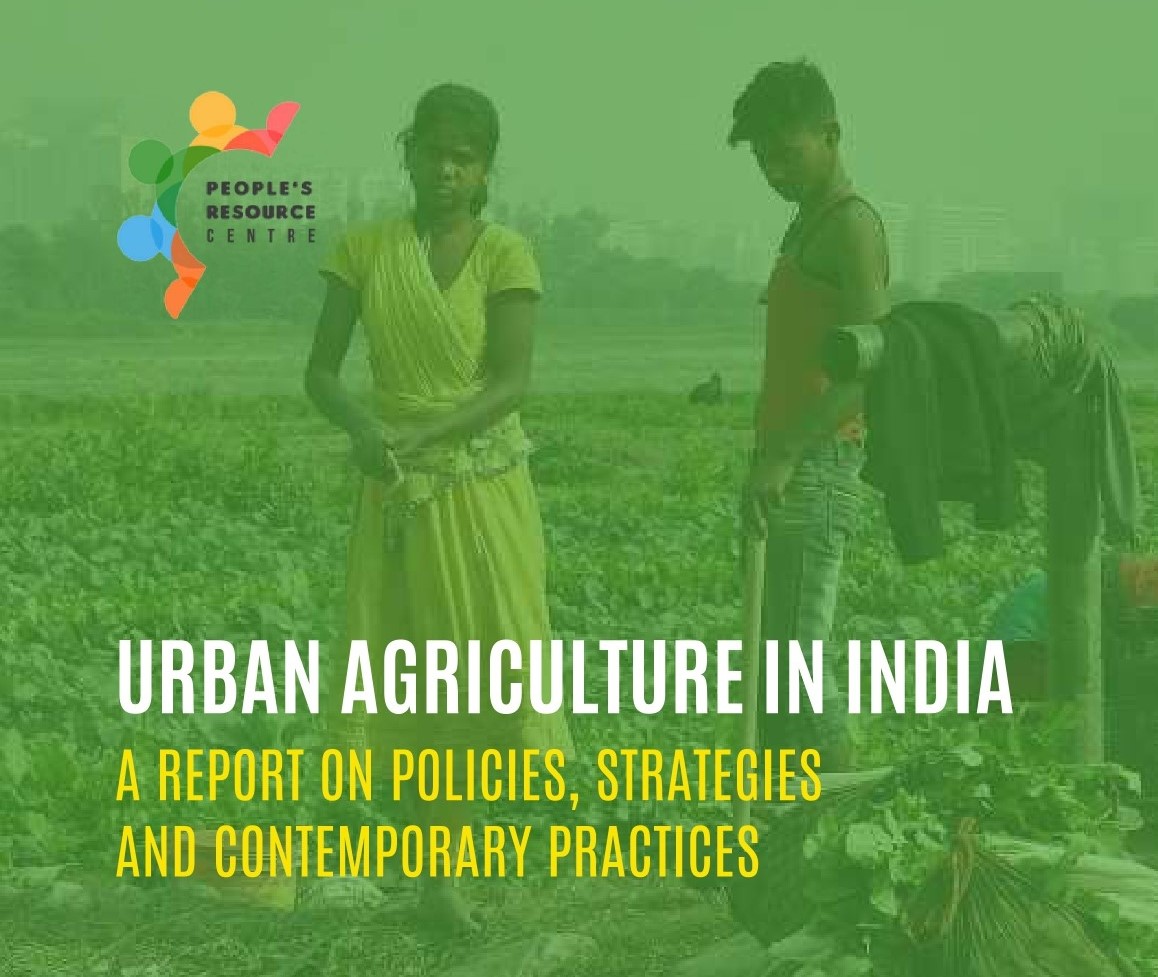According to the United Nations by 2050, 68% of the global population will be residing in cities. The increase will be asymmetrical as 90% of the population shift will happen in tier-2 and tier-3 cities in Africa and Asia. In India, 35% of the population resides in the urban centres. This shift paves the way for various challenges for Urban Planners in the form of poverty, food insecurity, housing, compromised nature spaces, and pollution. In the wake of these trends, Urban Agriculture emerges as an essential intervention for a nature-based solution for the contemporary challenges.
Food security emerges as one of the major concerns in this new model as cities rely heavily on external food sources, making them vulnerable to disruptions. Consequently, neo-urbanism compels cities to be more self-sufficient. To achieve this, we need to change the perception around agriculture. Traditional communities possess valuable knowledge for urban food production but are often hindered or neglected by existing policies and infrastructure. To bridge this gap, one must begin by analyzing existing knowledge from all stakeholders, including traditional communities, and build a robust network aligned with neo-urbanism’s principles.
Our understanding of urban spaces has traditionally excluded agriculture, pushing it to rural areas. This limited view has prevented us from incorporating food production into our cities for a long time. Also, the way we typically think about agriculture is narrow, focusing mainly on growing crops that blur the bigger picture, which includes pastoralism, fishing, and other activities, all crucial for a stable food system. These factors complicate bringing sustainable food production practices directly into our cities. As mentioned earlier, the contemporary urban food system also sidelines the valuable knowledge and skills of the traditional communities. These communities have a deep connection to the land and generations of experience that could transform how we approach food security in cities.
Urban farming, therefore, offers multifold solutions for India’s growing cities. As more people move to cities, the demand for food increases, putting a strain on rural resources and the environment. Urban agriculture allows cities to produce some of their food, reducing reliance on long-distance transport and its carbon footprint. Local food production also improves access to fresh, healthy, affordable food for city residents. Beyond food security, urban agriculture offers a range of environmental and social benefits. It reduces waste by creating closed-loop systems where food waste can be composted and used to fertilize crops. Moreover, it can help promote green spaces in cities, improving air quality and biodiversity while empowering communities by giving people more control over their food system and fostering social connections through shared gardens and markets.
Urban Agriculture contributes to several UN Sustainable Development Goals (SDGs) encompassing poverty alleviation (SDG 1), improved nutrition (SDG 2), sustainable consumption (SDG 12), environmental protection (SDG 13), and biodiversity conservation (SDG 15).
However, in the Indian context, Urban Agriculture remains invisible in urban planning and policy. With the integration of urban farming practices into various urban policies, such as land use, food security, health, and the environment, we can address the gap in utilizing the potential of traditional professions in modern urbanism. And then, by enabling a multi-stakeholder approach to farming and food production in Indian cities, we can think of creating a more inclusive and productive urban future. India has a significant opportunity to harness the potential of urban agriculture. By integrating urban agriculture policies into broader urban planning strategies, cities can create a more sustainable and livable future for all. These policies should address social, economic, and environmental aspects to ensure inclusive and productive urban spaces. There are already existing policies at national and state levels, but further development and implementation are needed regarding urban farming in India.
Hence, this report explores the potential of urban agriculture in India, examining how cities can become spaces for local food production and stronger communities. Analyzing the national and state policies alongside practical applications offers insights to improve future initiatives and hence, the report begins with the national policy framework and dissection of key policies from specific states. Later, it goes beyond policy pronouncements to assess their effectiveness in empowering individuals and communities to adopt urban farming practices. Success stories and challenges from Kerala, Telangana, Bihar, and Tamil Nadu provide valuable information for optimizing policy execution and creating a nationwide urban farming ecosystem. Beyond state government policies, the report explores localized initiatives and the role of municipalities with the aid of case studies from Rosario, Pune, and Chennai showcasing how decentralization can be crucial for successful implementation. By examining the complexities of urban agriculture and the role of municipal bodies, the report aims to shape and execute initiatives for sustainable farming practices. By discussing the initiatives, innovations, and challenges of urban agriculture, one can explore how cities can manage these initiatives effectively.
Examining real-world examples and comparing different policies from various locations, the report offers valuable insights for policymakers and urban planners in India. Inspired by existing policies and incorporating best practices from urban agriculture, India can create a more sustainable and resilient future for its cities. This vision prioritizes local food production, environmental health, strong communities, and empowered urban farmers, paving the way for cities as self-sufficient urban centers across the country.
Report prepared by Kislay Rai Pradhan (Research Assistant) and Vibhuthi Bhardwaj (Research Assistant).

